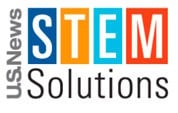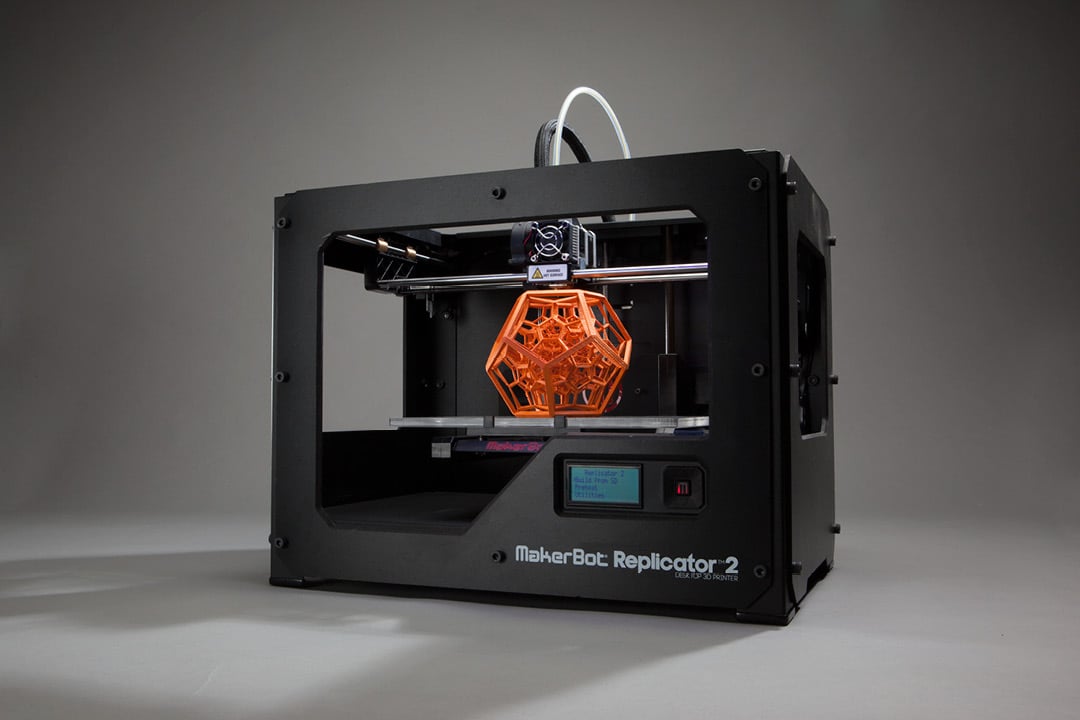Math curriculum makeover

Math teacher Dan Meyer is at it again! No longer content to just insist that teaching math has got to become entertaining if today’s kids are going to compete with kids from around the world, he’s now on record saying math teaching should get out of the textbook and go multimedia, audio, video -- the whole deal.
He’s got a point: kids live in a multimedia environment, maybe they should be learning in one as well. And as he points out, the multimedia learning environment needn't set the school or the teachers budget back by that much: “...this is an amazing time to be a math teacher right now ...because we have the tools to create this high-quality curriculum.... It's ubiquitous and fairly cheap, and the tools to distribute it freely under open licenses has also never been cheaper or more ubiquitous.”
- 0 Comments
- May 20, 2014 12:00:00 PM
- Posted by Charles Nimrad
- Topics: Math, EdTech, Education, Education Politics, 21st Century Classroom, Student Engagement
Improving gender and ethnic diversity in STEM jobs
 As everyone in the field is well aware, women and ethnic minorities are not sufficiently represented in STEM careers and in learning programs nationwide. Increasing their participation in a field that is fast becoming an important job provider in this country was the subject of a recent “Creating a Sustainable Commitment to STEM” session at U.S. News & World Report's STEM Solutions Conference in Washington, D.C.
As everyone in the field is well aware, women and ethnic minorities are not sufficiently represented in STEM careers and in learning programs nationwide. Increasing their participation in a field that is fast becoming an important job provider in this country was the subject of a recent “Creating a Sustainable Commitment to STEM” session at U.S. News & World Report's STEM Solutions Conference in Washington, D.C.
- 0 Comments
- May 13, 2014 4:00:00 PM
- Posted by Mike Nardine
- Topics: EdTech, STEM, National News, Education, Education Politics, Student Engagement
3d printers in Suffolk libraries
 Librarians in Suffolk County, NY believe it is part of their mandate as civilization’s repository of wisdom to allow users access to newer technologies like 3D printers. With a traveling exhibit including a Makerbot 3D digitizer and Makerbot 3D printer, they are out to show us that libraries are not, as one library director, Robert Lusak of the Smithtown Special Library District says, "... just about books and movies. Whatever the latest is in technology, we as the library want to be able to offer that kind of tool to our community." No question about it, 3D printers are the latest in technology, with one soon on its way to the International Space Station so astronauts can produce their own spare parts -- Scotty the chief engineer on the Enterprise would certainly have loved to have one!
Librarians in Suffolk County, NY believe it is part of their mandate as civilization’s repository of wisdom to allow users access to newer technologies like 3D printers. With a traveling exhibit including a Makerbot 3D digitizer and Makerbot 3D printer, they are out to show us that libraries are not, as one library director, Robert Lusak of the Smithtown Special Library District says, "... just about books and movies. Whatever the latest is in technology, we as the library want to be able to offer that kind of tool to our community." No question about it, 3D printers are the latest in technology, with one soon on its way to the International Space Station so astronauts can produce their own spare parts -- Scotty the chief engineer on the Enterprise would certainly have loved to have one!
- 0 Comments
- May 12, 2014 12:00:00 PM
- Posted by Charles Nimrad
- Topics: EdTech, Education, 21st Century Classroom, Student Engagement
Using 3D printer, every student can be a maker
 Educators, do you find yourself sceptical about the claims made for 3D printers as valuable teaching tools? I know I have been and I was educated when manual typewriters were the highest tech you were apt to see in high schools. As a freshman, I thought I wanted to go into engineering, but when I took a course in mechanical drawing and found myself pathologically incapable of drawing a straight line I left the engineering route forever. After reading about the experiences students had with 3D printers at Brooklyn Technical High School I lost my scepticism regarding these printers and began to wonder... if they’d had these printers when I was a boy would I have stayed in engineering?
Educators, do you find yourself sceptical about the claims made for 3D printers as valuable teaching tools? I know I have been and I was educated when manual typewriters were the highest tech you were apt to see in high schools. As a freshman, I thought I wanted to go into engineering, but when I took a course in mechanical drawing and found myself pathologically incapable of drawing a straight line I left the engineering route forever. After reading about the experiences students had with 3D printers at Brooklyn Technical High School I lost my scepticism regarding these printers and began to wonder... if they’d had these printers when I was a boy would I have stayed in engineering?
- 0 Comments
- May 9, 2014 12:06:57 PM
- Posted by Elad Inbar
- Topics: EdTech, STEM, 21st Century Classroom, Student Engagement, Project Based Learning
Gates Foundation report - Teachers Know Best: What Educators Want from Digital Instructional Tools
 Instead of simply leaving it to guesswork, the Bill and Melinda Gates Foundation decided to come right out and ask the question “What do teachers want?” The foundation asked the question because “in our work with schools over the last few years, we have heard a common theme: Teachers are trying hard to challenge and engage their students, but they don’t have sufficient choices for effective digital instructional tools that truly meet their needs.”
Instead of simply leaving it to guesswork, the Bill and Melinda Gates Foundation decided to come right out and ask the question “What do teachers want?” The foundation asked the question because “in our work with schools over the last few years, we have heard a common theme: Teachers are trying hard to challenge and engage their students, but they don’t have sufficient choices for effective digital instructional tools that truly meet their needs.”
- 0 Comments
- May 7, 2014 8:00:00 PM
- Posted by Elad Inbar
- Topics: EdTech, Education Politics, 21st Century Classroom, Student Engagement
Bringing the MakerBot 3d Printer into the Classroom

- 0 Comments
- May 5, 2014 9:11:00 PM
3d printing in education in Japan
Hey! Here is some good news: the Japanese government thinks it has to play catch-up to the United States in at least one area of manufacturing technology, 3D printers. After a lifetime of hearing about the supposed superiority of Japan in all things manufacturing--I’m driving a Subaru; how about you?--it’s great at last to find something about American manufacturing worth emulating.
Even more important, it’s great to realize that we Americans are doing something right in our schools--intending to furnish every single one of them with 3D printers. The determinative word in that last phrase is “intending;” we still have a long way to go before we can claim victory.
This wonderful new technology, as President Obama said in his 2013 State of the Union speech, “... has the potential to revolutionize the way we make almost everything. The next industrial revolution in manufacturing will happen in America.” Of course the Japanese would prefer that the revolution start there!
- 0 Comments
- Apr 28, 2014 1:30:00 PM
Makerbot 3d printing in schools
Math teachers, science teachers and engineering teachers, are you looking for a way to make your beloved disciplines more relevant to your students? Maybe even inspire a few to love them the way you do? Well, right now there is affordable new technology out there that can help you do just that! The Makerbot 3D printer and STEM BOT 3D CLASS from our own RobotsLAB.
StemBot 3D program that teaches students how to 3D print a robot, assemble it, work on the electronics, and finally program it.
Actually, 3D printers have been around since the 1980’s, but they were massive and super-expensive like the first-generation computers. Only in the last few years have they shrunk in size and dropped in price to where individual households and schools could afford them.
- 0 Comments
- Apr 22, 2014 12:30:00 PM
Robots in Pre-Calculus

As part of a school wide implementation of Problem based Learning (PBL), the pre-calculus classes at Sammamish High school in Bellevue, WA used robots to teach math. The prompt was simple, “What pre-calculus level math lesson could you teach using one of the robots we have?” The work produced was amazing!
First the students were given the opportunity to play with the robots and see how they worked. They had access to all four of the robots from the RobotsLAB kit: Sphero – a small robotic ball, ArmBot – a mechanical arm that can pick objects up, Mobot – a rover that moves with precision, and a quadcopter AR.Drone. Students also had access to an additional robot, LinkBot – two rover bots who could be programmed to mimic each other. After students investigated each robot, they selected one robot to use as a tool to teach a pre-calculus level lesson. Students had the option of choosing a topic they had already studied or choosing a topic they had yet to study.
- 0 Comments
- Apr 21, 2014 10:00:00 AM
TeacherCast Interview: Learn How RobotsLAB is innovating STEM Education
- 0 Comments
- Apr 11, 2014 10:30:00 AM
- Posted by Anna Sandler
- Topics: Math, Robotics, Pre-Calculus, Local News, EdTech, STEM, National News, Education, Press, Computer Science, NAO, 21st Century Classroom, School, Student Engagement, Geometry,, Middle School, algebra,, Curriculum
Relevant Posts
Popular Posts
Subscribe to Email Updates
-
I Want To Learn MoreADDITIONAL INFORMATION


